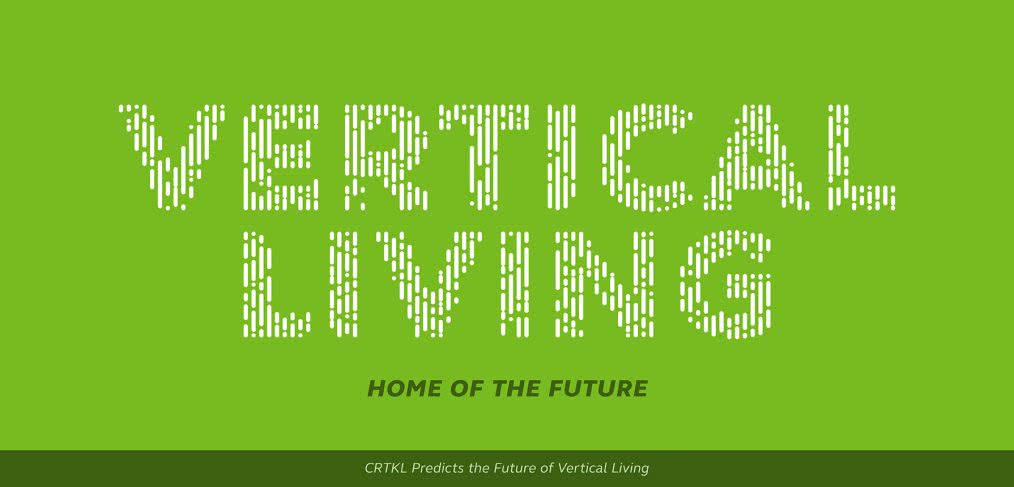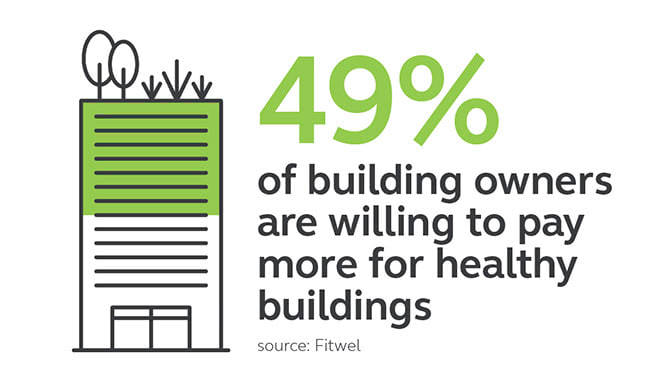
DATÜM: Vertical Living, Living Well
CallisonRTKL recently unveiled Vertical Living: Home of the Future, a data- and insight-driven digital report that predicts the future of residential design and, specifically, how our homes will evolve to support our well-being. From bio-organic merchandise, soy-based insulation and a daily wellness concierge, what if your residence could increase your life expectancy? We take a deeper look at how designers are becoming increasingly intentional about weaving wellness into the fabric of our homes.

HEALTH TAKES CENTER STAGE
As healthcare costs rise right alongside life expectancies, the pursuit of a healthier lifestyle has become a cross-generational one. While the focus on office building design and its direct bearing on occupant productivity, health and well-being have long been in the spotlight, multifamily residential buildings are increasingly recognized as key environments where design can make a big difference—particularly as access to green space, views to nature and abundant daylight are enthusiastically sought after in densifying urban areas. As such, biophilic features like vertical green walls and sky gardens have become a popular way for developers to differentiate their properties, attract renters and retain talented staff.
- In 2017, global healthcare costs are projected to rise 7.8%, up from 7.3% in 2016 [source: Willis Towers Watson]
- 46% of residents are willing to pay a premium for fitness centers; and 42% are willing to pay a premium for walking trails [source: J. Turner Research, National Apartment Association, April 2017]

WELLNESS INSPIRED
Residents now anticipate that their living environments should offer something more than the standard fitness center, and developers and designers are conceiving of ever more creative ways to meet this demand.
Community Wellness
In an effort to empower its residents, the Lake Nona community in Orlando, Florida is taking on a long-term study to move them closer to their goal of designing a comprehensive city for wellness. This 17-square-mile community aims to establish itself as a living lab where health and wellness initiatives can be tested and potentially replicated on a larger scale. They also recently unveiled a smart home with WHIT (Wellness, Health, Innovation, Technology), a system designed to improve health and well-being.
Open-Air Fitness
In Brooklyn, 7 DeKalb Avenue uses its outdoor terrace to host residents-only outdoor yoga in partnership with athleisure outfitter Lululemon. Residents of The Ritz-Carlton Residences Miami Beach take full advantage of Florida’s year-round warm weather with a private jogging and walking path that circumnavigates the entirety of the property’s 7.2 acres. It also features the latest Technogym equipment, tranquil indoor and outdoor yoga studios, a lush meditation property garden and co-ed sauna.
Healthy Offices Take the LEED—and WELL
American Society of Interior Designers’ (ASID) Washington DC headquarters is the first in the world to receive both LEED and WELL Platinum Certification under WELL Building Standard v1, making it the greenest and healthiest office on the planet.
Lighting: Going Infrared
At Anbau’s luxury condo Citizen360, posted up on the Upper East Side, residents can bask in the benefits of the wellness lounge’s infrared sauna. Clodagh, the interior designer behind the building’s interiors and amenity spaces, designed the unique experience to facilitate a variety of health benefits, like weight loss, stress relief and muscle relaxation. Citizen360 has an entire level devoted to wellness that includes a fitness center, yoga and dance studio, massage room and private fitness areas.

WELLNESS BY DESIGN
As designers consider how to better integrate wellness into their practices, here are some suggestions for thinking beyond the typical offerings to create a holistic wellness experience for residents.
Think healthy communities—not just healthy buildings
Wellness must extend beyond a building; planning authorities and communities need to support an entire wellness ecosystem. Incorporating active design elements where physical activity and movement are encouraged supports residents’ efforts to make healthy changes to their daily routines. If the city works to promote health and wellness, the ripple effects on productivity and happiness could be game-changing.
Push the future envelope
The Living Building Challenge, WELL Building Standard™ and Fitwel℠ are evidence-based building certifications and performance standards encouraging designers to strive for more healthful spaces. However, for the most part, designing for wellness hasn’t yet been fully embraced. Many developments are settling for a reconfigured fitness center and landscaped gardens to check off the “wellness amenities” box, but residents visiting these developments have higher expectations and won’t be fooled by marketing tricks.
It’s important for designers and developers to think beyond the current certification requirements and push the boundaries on wellness design for the future. How can we quantify a buildings’ impact on life expectancy, for example? Can healthy buildings offer health insurance incentives for residents? How can healthcare be more directly integrated into residential spaces? Only time will tell.
